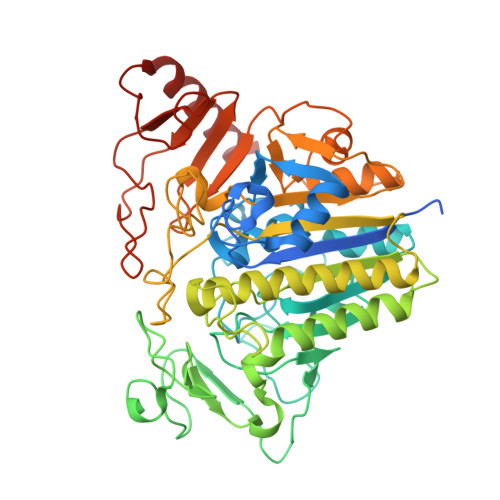Metabolism of multiple glycosaminoglycans by Bacteroides thetaiotaomicron is orchestrated by a versatile core genetic locus.
Ndeh, D., Basle, A., Strahl, H., Yates, E.A., McClurgg, U.L., Henrissat, B., Terrapon, N., Cartmell, A.(2020) Nat Commun 11: 646-646
- PubMed: 32005816
- DOI: https://doi.org/10.1038/s41467-020-14509-4
- Primary Citation of Related Structures:
6S20, 6S21 - PubMed Abstract:
The human gut microbiota (HGM), which is critical to human health, utilises complex glycans as its major carbon source. Glycosaminoglycans represent an important, high priority, nutrient source for the HGM. Pathways for the metabolism of various glycosaminoglycan substrates remain ill-defined. Here we perform a biochemical, genetic and structural dissection of the genetic loci that orchestrates glycosaminoglycan metabolism in the organism Bacteroides thetaiotaomicron. Here, we report: the discovery of two previously unknown surface glycan binding proteins which facilitate glycosaminoglycan import into the periplasm; distinct kinetic and genetic specificities of various periplasmic lyases which dictate glycosaminoglycan metabolic pathways; understanding of endo sulfatase activity questioning the paradigm of how the 'sulfation problem' is handled by the HGM; and 3D crystal structures of the polysaccharide utilisation loci encoded sulfatases. Together with comparative genomic studies, our study fills major gaps in our knowledge of glycosaminoglycan metabolism by the HGM.
- Biosciences Institute, Newcastle University, Newcastle upon Tyne, NE2 4HH, UK.
Organizational Affiliation:



















